Gleaning: Biblical Origins, Modern Day Practice
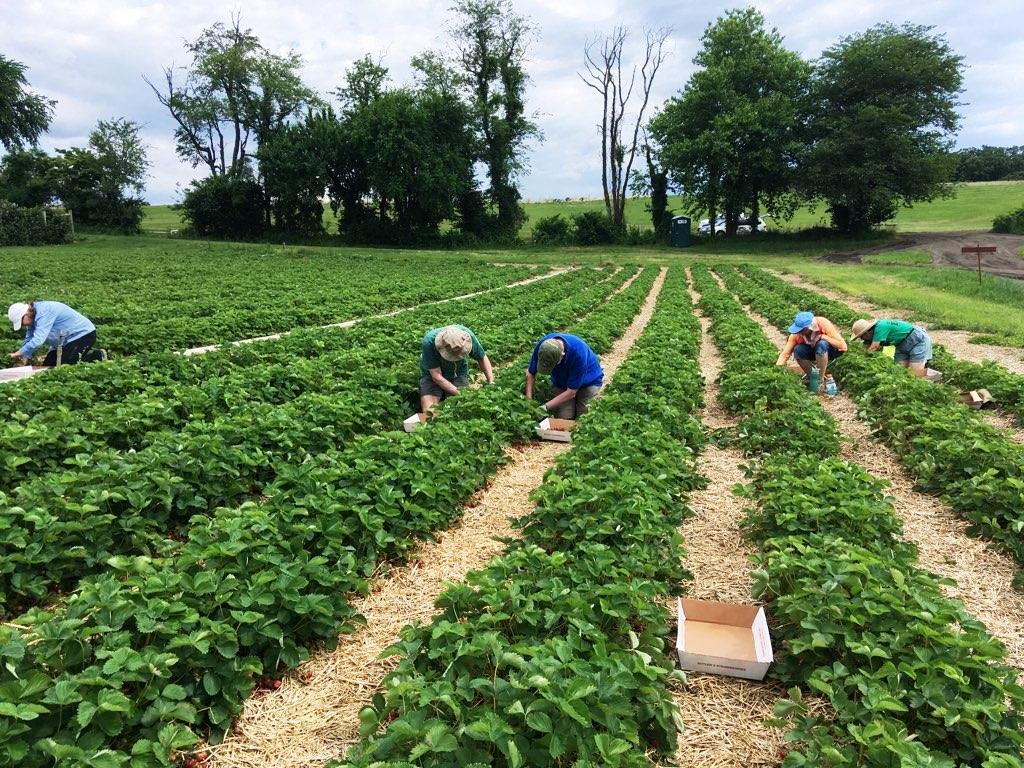
“Now when you reap the harvest of your land, you shall not reap to the very corners of your field, nor shall you gather the gleanings of your harvest.”
This passage from Leviticus 19:9 refers to the ancient practice of gleaning food after the harvest leaving food in the field for those in need. This ancient practice in spirit and deed are just as relevant today. In keeping with Community Food Rescue’s feed more and waste less, we’ve partnered with University of Maryland Extension, Montgomery County Master Gardeners, and the Montgomery County Food Council to glean food that is not economically viable for commercial harvest.
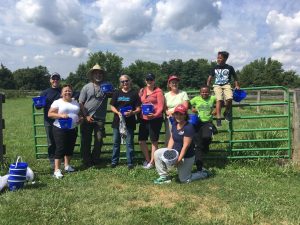
Gleaners picked 338 lbs. of end of season blueberries.
This year, thanks to generous gleaning opportunities from Red Wiggler Community Farm, Butler’s Orchard, and Farm at Home, we’ve gleaned 248 lbs. strawberries, 338 lbs. blueberries, and 32 lbs. sweet potato vines. The gleaned fresh produce was donated to Washington Grove and Sally K. Ride Elementary Schools and CFR network members.
Sweet Potatoes: More than Just a Tuber
Blog excerpt courtesy of Red Wiggler Community Farm:
On August 20th, 2018 we invited a group of volunteers to our site at Ovid Hazen Wells Park to glean sweet potato greens. This project was a partnership between Community Food Rescue, University of Maryland Extension, School of Supplementary Nutrition Education, the Montgomery Council Master Gardeners and The Montgomery County Food Council. We welcomed the opportunity to have this group work with Growers to harvest a portion of this plant that has historically been underutilized.
Sweet potato greens have a surprising history in the Mid-Atlantic region of North America. Many Americans enjoy sweet potatoes during the Holidays, as harvesting is at its peak from October to early December. While most associate eating sweet potatoes with the tuberous root portion of the plant, West African & Asian communities have incorporated the greens into their culinary practices for ages.
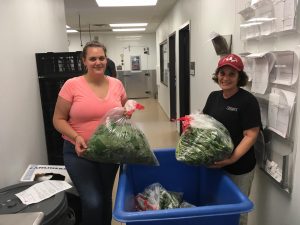
CFR’s Susan Wexler delivers sweet potato vines to Chef Christina Moore at Shepherd’s Table
Like beet greens, the greens of sweet potatoes can be sautéed and prepared as a main or side dish.The leafy treats are packed with nutrients; in fact, they tend to hold three-times more vitamin B6, five-times more vitamin C, and close to ten-time more riboflavin than the root of the sweet potato.
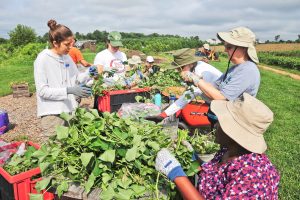
Gleaners strip sweet potato leaves off of vines
Despite the apparent value of this part of the sweet potato, farmers often waste this part of the plant because of a lack of demand from commercial entities. Red Wiggler was thrilled to welcome our partner organizations to assist in delivering this super green to Shepherd’s Table, a nonprofit that has provided food to low-income families in Montgomery County for over 30 years.
Gleaning, Cooking, Eating, Sustaining
Shepherd’s Table Chef Christina Moore cooked the greens a few days after harvest as part of their chicken dinner for 120 people. “The guests loved them, and I got to try something new! Feel free to send any more our way!!”
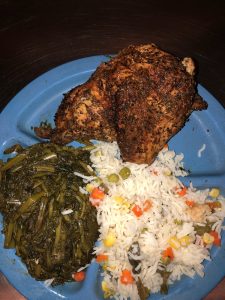
Sauteed sweet potato vines served to Shepherd’s Table guests.
Gleaning provides the opportunity to learn about modern-day issues in our community. Red Wiggler Community Farm Executive Director, Woody Woodroof joined the October 20th staff and gleaners for lunch and discussed food waste and food insecurity in Montgomery County. Woody summed up the big picture perspective of gleaning explaining, “partnerships like these allow Red Wiggler to give back while pursuing its long-term sustainability goals.”
As part of our upcoming Community Food Rescue Week, join us to glean fallen apples from Butler’s Orchards on Oct 18th. Learn more and sign up!

